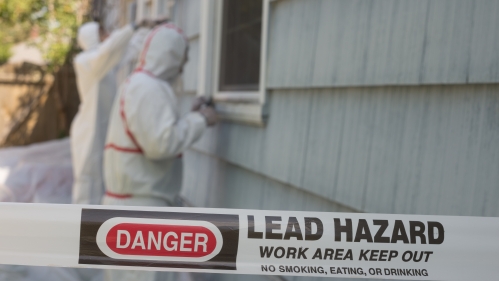A review by a Rutgers Health expert shows that, despite decades of successful efforts to reduce lead exposure, the toxic metal still poses dangers in consumer products that warrant additional attention.
"Consumer products were consistently identified as one of the main sources of lead exposure – and the only identified source in 15 percent to 38 percent of cases – in investigations of children with elevated blood lead levels in these four jurisdictions," said Adrienne Ettinger, adjunct professor at Rutgers School of Public Health and author of the invited commentary in Environmental Health Perspectives.
Ettinger is the former chief of the Lead Poisoning Prevention and Environmental Health Tracking Branch at the U.S. Centers for Disease Control and Prevention (CDC) and currently chief of staff for research at Rutgers Health.
Ettinger reviewed a study of lead in consumer products in four states: New York, California, Oregon and Washington. That paper, which was co-authored by Rutgers graduate Paromita Hore, came from Pure Earth and state and local health departments in the four states.
Lead is found in consumer products ranging from imported foods and spices to cosmetics, toys and even cake-decorating materials.
Lead appears in so many places because it is durable, versatile and readily found in the environment. Unfortunately, it’s also a potent neurotoxin, particularly in children. Even minimal exposure can hinder neurodevelopment and cause enduring health issues ranging from headaches and abdominal pain to loss of infertility and brain damage. At least 2.5 percent of children have blood lead levels greater than the CDC’s reference value.
Despite these challenges, significant strides have been made.
"The removal of lead in gasoline and paint was declared one of the biggest public health successes in the 20th century," Ettinger said. The U.S. population’s average blood lead levels declined by more than 95 percent from 1976 to 2016. However, an estimated 800 million children worldwide still have levels of lead higher than the World Health Organization (WHO)’s level of concern.
The regulatory landscape in the U.S. is fragmented, with different federal and state agencies responsible for various products and exposure sources. This disjointed approach creates loopholes that manufacturers can intentionally or unintentionally exploit. Additionally, the legacy of historical lead use continues to pose risks, such as contamination at abandoned industrial sites and aging urban housing.
Experts advocate several actions to further diminish lead exposure. Strengthening both domestic and international laws and enforcing them more rigorously would further protect consumers. A national data repository to systematically track and communicate persistent risks would give people more information to protect themselves.
"The New York City Department of Health and Mental Hygiene has called for a national data repository of consumer products identified with lead to systematically monitor and allow for better communication of ongoing risks to the public," Ettinger said.
Global trade exacerbates the issue. Products manufactured in nations with lax or nonexistent regulations can infiltrate United States markets, particularly through online platforms and personal transport of goods. This international aspect of the problem underscores the need for worldwide education and cooperation, Ettinger said.
The U.S. Agency for International Development, which administers non-military foreign aid, has called for a worldwide effort to eradicate toxic lead from consumer goods. This and other global efforts may foster increased international regulation and cooperation.
Individuals can take steps to protect themselves and their families by staying informed about potential sources of lead. Consumers can learn about product recalls at recalls.gov, a website that aggregates recall information from six federal agencies. Consumer Reports, an independent nonprofit that tests products and advocates for consumers, also routinely tests for lead in products.
Residents of older homes, particularly those constructed before 1950, should exercise caution during renovations because of the possible presence of lead-based paint. Professional testing and adherence to safe renovation practices can significantly reduce risks.
Although routinely testing blood lead levels isn’t recommended for most people, it makes sense for high-risk groups. Individuals working in industries that handle lead or engaging in hobbies involving lead – such as crafting fishing sinkers or bullets – should consider asking their doctors about a blood lead test.
"Ensuring that consumer products are free of lead and mitigating historical sources of lead from the production, manufacturing and disposal of consumer goods are critical actions for public health," Ettinger said.



